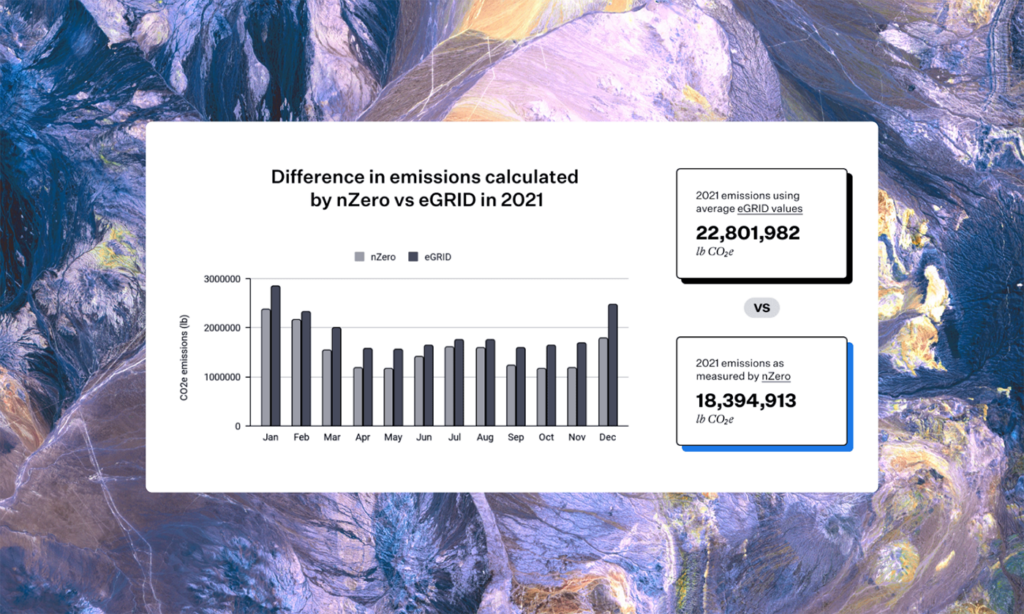New York Agrees to Delay All Electric Buildings Act
- Topics :
- Data Quality Government

hen it comes to climate action, the writing is on the wall: we need an ambitious whole-of-government approach at every level, in every jurisdiction. Carbon pricing and emissions regulations are quickly expanding and intensifying within state and local governments – creating a complex landscape of policies that organizations must navigate. Accurate emissions data is of #1 importance to every organization as it will help them avoid costly penalties, ensure compliance across jurisdictions, and make informed decisions for effective carbon reduction and cost reduction strategies.
Why Accuracy Matters: State Level
US state governments are starting to get serious about pricing carbon pollution. Today, cap-and-trade programs in California and Massachusetts set a limit on the total emissions that can be produced by regulated industries such as utilities, manufacturing, and commercial/residential buildings. States are using the cap-and-trade revenue to invest in renewable energy, efficiency programs, and other climate initiatives.
Carbon allowances made available to targeted industries gets smaller and smaller each year, driving down total allowable emissions. This also means that the market price for additional one-ton carbon allowances goes up each year. At California’s quarterly auction in February 2023, the settled auction price for a single carbon allowance was $27.85, with over 56 million allowances sold to industry at that time.
That’s why the accuracy of your carbon data matters. If you’re using annual average emission factors to calculate your carbon emissions – which are less accurate and out of date – your emissions are likely off by an average of 30%. That’s because averages don’t account for significant changes in the grid’s carbon intensity at different points during the day or year.
Over reporting can be extremely costly, as you may end up buying allowances you don’t need. But penalties for underreporting emissions – through inaccuracies, incompleteness, or lack of verification – can also be costly. California law states that those who violate mandatory reporting regulations are strictly liable for a penalty of up to $10,000 for each individual violation.
Thankfully, cap-and-trade systems appear to be working. For example, California’s cap-and-trade program enabled California to meet its 2020 emissions target in 2016 – 4 years early.
Why Accuracy Matters: Local Level
Emissions regulations are starting to happen at the municipal level too. For example, New York City’s recent Local Law 97 requires all buildings larger than 25,000 square feet to meet carbon emissions caps, starting in 2024. Following 2024, the total allowable emissions will go down year after year.
Buildings that do not meet NYC’s Local Law 97 requirements will face a number of financial penalties. For starters, if a building exceeds its allotted carbon limit, the owner will be forced to pay $268 per metric ton of carbon over that limit. Failing to file your emissions will cost you $0.50 per building square foot, per month. And providing a false statement can land you a fine of $500,000.
Other cities are moving on climate action in similar ways. For example, Denver’s Green Building Ordinance requires owners of buildings larger than 25,000 square feet to select from a preset menu of sustainability interventions to reduce emissions. Options include installing onsite renewable energy, implementing green spaces, or driving energy efficiencies. If a building doesn’t comply with any interventions, it must pay into Denver’s Green Building Fund at $50/square foot times sixty (60) percent of the building’s total roof area. For a single 20,000 square foot building, that’s a possible fine of $600,000.
Local reporting and decarbonization ordinances are popping up across the country – in Portland, Seattle, and Boulder, to name a few – with more certainly coming.
Accurate emissions data will be absolutely critical for organizations as they gear up for additional climate regulations.
NZero Data vs. Others
What accounts for the difference between NZero and other tools? Other carbon accounting and management tools rely on third-party data and outdated averages. NZero is different.
Our platform
- Unlocks completely automated data capture that is, on average, 30% more accurate than averages and competitor data
- Collects accurate hourly energy consumption data directly from the energy source
- Models the carbon intensity of the electricity grid and calculates the carbon intensity for every individual hour of energy usage for every one of your sites
- Deploys compliance-backed advanced grid methodology
- Unlocks your most accurate carbon footprint through pairing your hyper-granular usage data and site-specific hourly carbon intensity
- Pairs you with a dedicated customer success team to help gather and sync data into the platform
Accurate Data vs. Averages: A Case Study
NZero recently helped one of our commercial real estate customers measure its annual carbon footprint using NZero’s real time technology to calculate a hypothetical carbon tax scenario. We compared one of their building’s footprints to a footprint calculated using the EPA’s eGRID annual average emission factor – which are less accurate and out of date.
Our analysis showed they would’ve over-reported their building emissions by 24 percent! If their state had a carbon tax they could’ve had to pay up to $92,000 in carbon allowances because of the overestimation (using California’s 2022 reserve sale Tier 1 price of $46.05).

Why Accuracy Matters
Accurate emissions data will be absolutely critical for organizations as they gear up for additional climate regulations. We believe everyone should be empowered with accurate, automatic data on their Scope 1, 2, and 3 emissions so they can make confident decisions to reduce their emissions, reduce risk and cut costs.
To get to net zero tomorrow, you need accurate data today.









